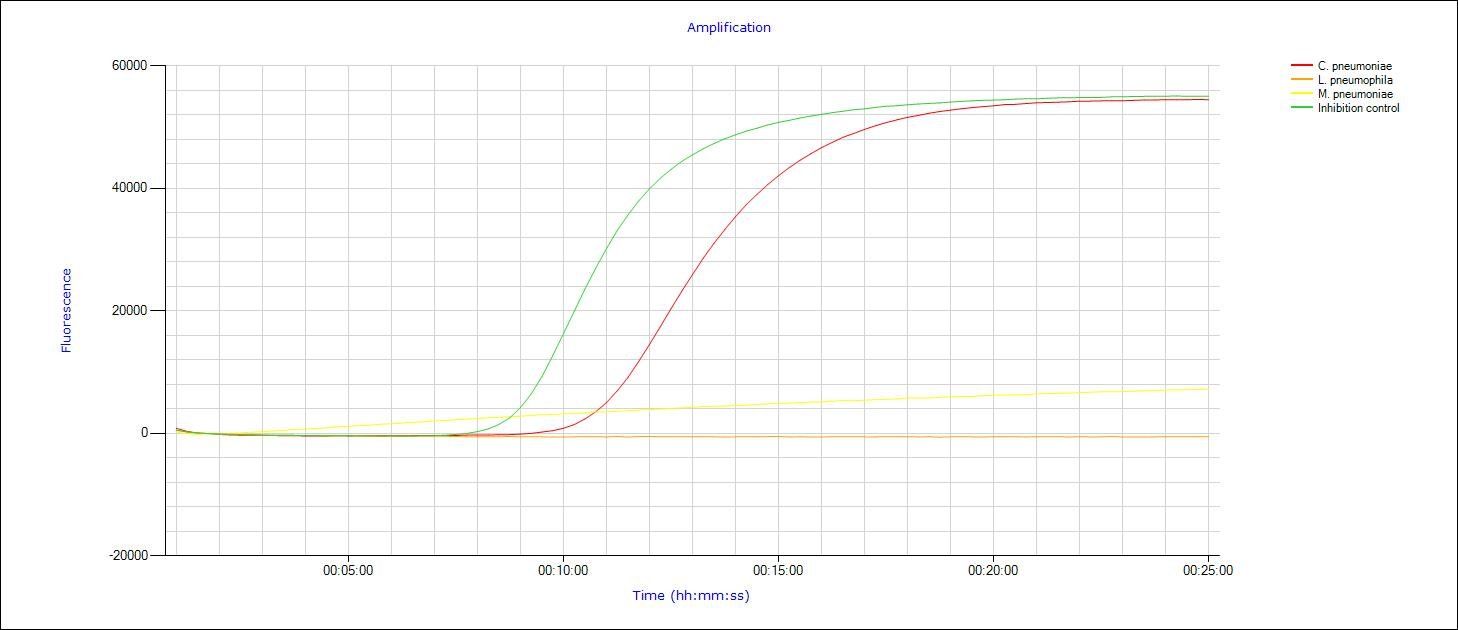eazyplex® PneumoBug expert
Lyophilized
Ready to use
No DNA extraction
Quickly
eazyplex® PneumoBug expert
Direct diagnostics from BAL, bronchial and tracheal secretions in 25 minutes With eazyplex® PneumoBug expert you have reliable help for your diagnostics!

Details
"Chlamydophila pneumoniae is a very common cause of respiratory infections in humans that is widespread throughout the world. According to seroepidemiological studies, the infection already begins in preschool age and is over 50% for women in the 6th decade of life and over 70% for men. About the spread of Cp. Pneumoniae infections are little known in Germany. However, a very high degree of infection can be observed, so that everyone should have contact with Cp. Pneumoniae at least once in their life. On the basis of seroepidemiological studies, it is estimated that 5–15% of community-acquired pneumonia caused by Cp. pneumoniae. " Quotation RKI adviser: Chlamydioses (Part 2): Diseases caused by Chlamydia psittaci, Chlamydia pneumoniae and Simkania negevensis "
"Legionella pneumophila are gram-negative rod bacteria and pathogens of Legionnaires' disease, a serious and in approx. 9% of cases fatal pneumonia. According to a study by the network for community-acquired pneumonia (CAPNET), approx. 3.8% of all pneumonias in Germany are caused by Legionella , which corresponds to approx. 20,000 cases of Legionella infections per year. " Quote: RKI FG 11 Analysis of virulence mechanisms of the lung pathogen Legionella pneumophila Prof. Antje Flieger
"The endemic spread of Mycoplasma pneumoniae means that individual diseases can be expected over the entire year; before epidemics, an increase in cases can be observed. In epidemic years, the proportion of M. pneumoniae infections in non-nosocomial (" outpatient ") pneumonia can be 20 percent (2). Because the initial symptoms are not very characteristic and can easily be mistaken for banal viral infections, the patients, often children, are often presented to the doctor late. The auscultation findings are usually unimpressive; the extent of the pneumonia usually only becomes clear on the X-ray. With the exception of the ESR, the laboratory parameters are of little importance. Specific antibodies only appear in the late acute phase (7) or - in the case of immunosuppression - not at all, the cultural pathogen detection takes too long. Only the use of modern methods such as the direct detection of M. pneumoniae antigen (5) DNA amplification processes (8) allow a diagnosis that is relevant to the treatment decision. "Quotation: Jacobs et al. Mycoplasma Pneumoniae Atypical pneumonia: a diagnostic one Challenge




